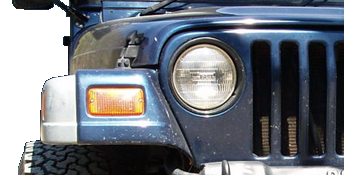The driveway going down to my shop is crusher run and it seems to wash out easier than the clean stone.
The only part of your driveway that has any significant slope washes out when it rains? That's weird.

That's what I was waiting for. I knew you could lay down a drive without needing a box scrape to "fix it" so I was very curious to hear what YOU thought of her "knowledge".
Well, it depends. From what I recall, you're cutting a road (or improving an existing forest road) that runs through a wooded area and over a culvert. It's probably got a bunch of organic stuff on top that needs to be cleaned off. So you do that first, and get down to clean subsoil or maybe even an existing stone roadbed. If there's a roadbed there, and it's in good shape, your work might be half done. If not, you need some stone for a good base. All the complaints about crusher run/ABC are spot on: the fines make dust worse, and they turn into grey mud when wet. But the different sized aggregate in ABC bonds together and creates a solid base that seems as strong as concrete. Variations that comply with DOT specifications are commonly referred to as "road base" for a reason. That's why I suggested using it as a base and topping it with a washed stone. A larger stone base (think #4 or bigger) can also work, and may work better than ABC in areas that are soft/wet. A washed stone base will be more porous, and will let water permeate down through the road (to a point), whereas ABC sheet flows. Washed stone can be displaced more easily by tires, though, particularly on hills or areas where you turn sharply (parking pads, etc).
As for spreading and thicknesses, I think Rodney is right - when it falls out of the truck, it's going to be about 4" thick and about 8ft wide. Given that you're probably going to be pulling trailers down this road, I think you want a road base that's in the neighborhood of 12ft wide, more in areas that aren't straight. So let them spread it with the dumps, then come back with a skid loader and spread that 4"x96" pile down to a 2-3"x 10-12ft road base. Then repeat on the next load. The equipment should help with compaction, too. The best way would be with a plate compactor or vibratory roller, but that might be a bit much for what you're describing here.
As for the existing city/DOT road, I bet you'll run into stone road base before you get within a foot or two of the asphalt.
I'm interested to hear other folks opinions on all of this, as I have an existing stone driveway that needs fixing.
I'm no civil engineer, but I did write this post on the commode.


 As for ton/yard, most Quarry's use the "Yard = 1 1/3 to 1 1/2 ton". Based on stone weight. ABC will generally be the heaviest. [1 1/2] Measure out the yardage & multiply the tonnage.
As for ton/yard, most Quarry's use the "Yard = 1 1/3 to 1 1/2 ton". Based on stone weight. ABC will generally be the heaviest. [1 1/2] Measure out the yardage & multiply the tonnage.
